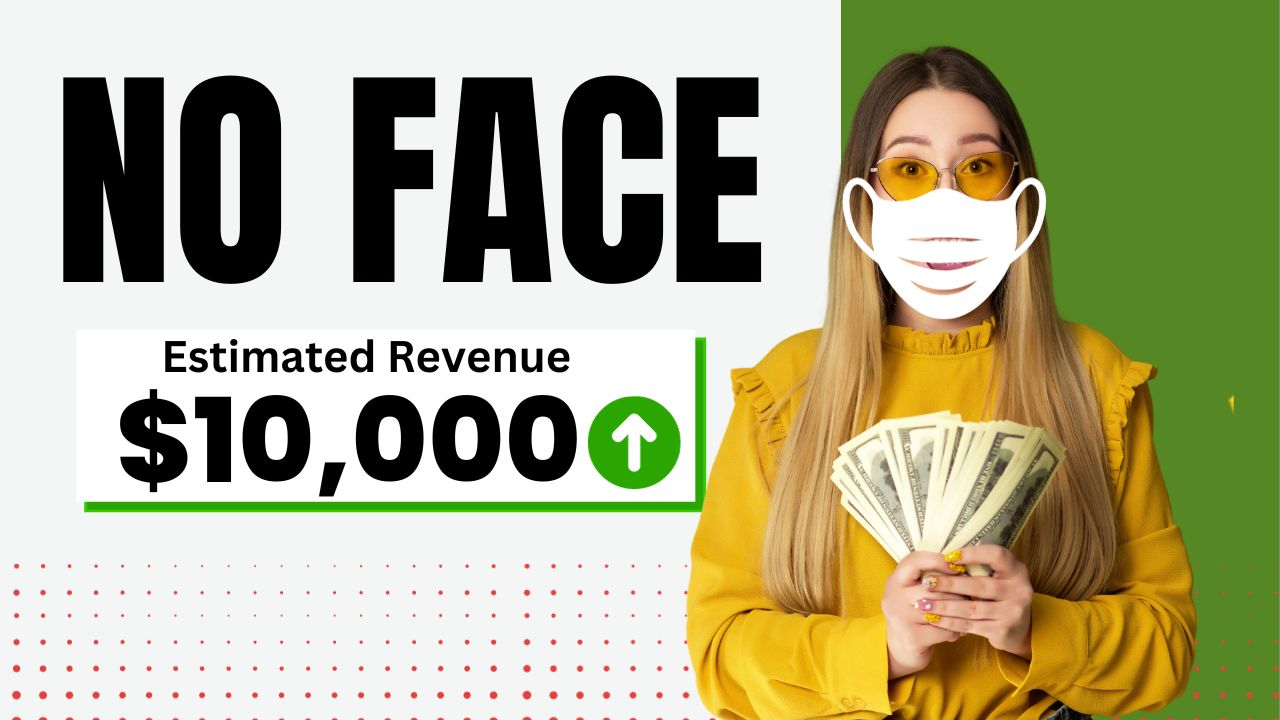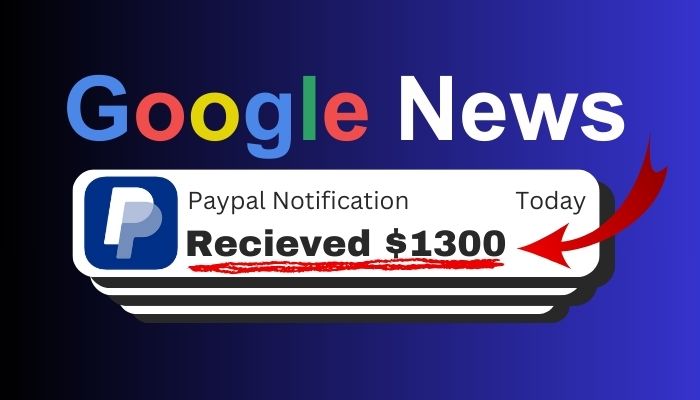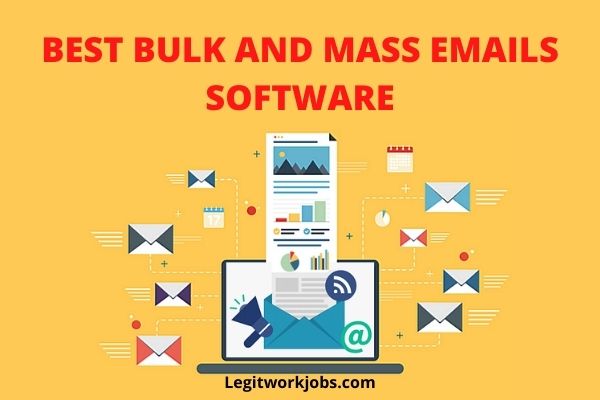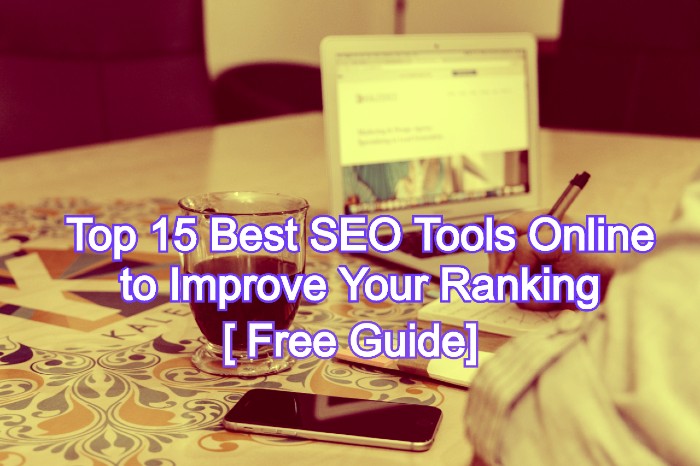Blog
How to Start a Blog in 2023: The Ultimate Guide for Beginners (Free)
Do you want to learn how to start a blog and make money like a successful entrepreneur and not a hobbyist? If the answer to this question is yes, you have come to the right place. When I was learning how to create a blog back in 2019, it took me some time to find all the right information online.
I had to look for it on different websites. That is the reason why I have created this free step-by-step blog tutorial to teach beginners how to set up a blog and earn significant money within a few months, not years.
Lots of people have a myth that it is too saturated to make money blogging in 2023. However, it is not true. All you need is precise tactics. And, you require to level up. That’s all. With these two things, you are 99.99% ready to win this battle.
Now, you must be thinking why should you follow my advice on how to start a blog?
- I was a working mom in the IT field and was finding a way to earn money without stepping out of the house as I have a kid by escaping my 9 to 5 job. And, in any way, I do not want to compromise on that. I wanted to spend every moment with my son. I am passionate about writing since childhood and that’s why I have decided to launch a blog. And, finally, I launched this blog in 2019 and I am making a handsome amount of money through it.
- The tips and hacks that I make you understand in this blog are not from individual bloggers, but instead, it is from startups like HubSpot, G2, Crowd, Foundr, and so on.
- I have failed a lot of times in the past and really want to succeed. When you surf on the internet for blogging advice, you will find tons of and most of the advice out there is out-of-date. 95%-96% of bloggers are still failing and I want to change that.
This blog speaks about how to select the right niche, launch your site with WordPress, generate traffic, and monetize your site in the fastest timeframe possible. All you can do while working full-time.
Today, I will assist you with learning how to start a blog using the similar tactics that I used to grow from 0 back in 2019 and enjoying my passion for writing while earning. Using it, I start making over $500/month within a few months.
This guide will take half an hour. Yes, it might be extended reading, but it is worth it. I have covered everything here that as a new blogger you should know for starting a blog.
Just read this blog thoroughly and save it in your bookmark. Then, come back to it later whenever you need to read it again for any of your doubts. If you have any questions about this guide or get stuck with the steps, then I would be more than happy to assist you. You can connect with me via the contact form.
Disclaimer: This blog post includes some affiliate links which will give a commission to me costing you zero. These links are for the best software and tools that you require to start a successful blog.
Now, without further ado, let us get started and go over how to make a blog through this blog post, I will try my best to teach you how to become a successful blogger.
How to Start a Blog and Make Money in 11 Easy Steps
Before we dive deep into these 11 steps, I feel I should cover some basic things. You must be totally clear about these things before you start your blog.
Why are you starting a blog?
The first and most important thing is you must be clear about why. You must be clear about your intention from the start.
We all start a blog for different reasons – to earn some extra bucks, to build an audience base, to build a professional CV, to improve our writing list. In short, the result is endless.
But, these reasons go deeper than that.
For example, if you want to learn how to start a blog that generates a handsome amount of money, it could be due to various reasons.
- You want to earn some extra amount and save that for your retirement.
- You have a dream of quitting your 9 to 5 job and saying goodbye to that hectic routine.
- You want to spend more quality time with your family.
- You wish to save some extra amount for vacation every year.
So, you should go deep into your why statement to not only comprehend your objectives but also what fulfilling your goals will mean for your life.
If you want to know about my goals, then I never wanted to work for someone else for 40+ hours a week till I get retired. So, I always dreamed of earning enough money to avoid the corporate rat race. And, I really did not want to do something 9 hours every weekday.
In short, the first reason I started my blog was time freedom.
The second reason was – I wanted to live up to my own expectations by avoiding weaknesses at any cost.
And it is not like I have achieved success on my first attempt. I tried and failed plenty of times. But, I did not give up. And, finally, I found the secret formula to make it work.
I merely did not know what I did not know.
Therefore, I have finally decided to share this successful formula with you.
Without further ado, let us get started with step one.
1. Select the Right Niche for Your Blog
The initial step to start a blog is to get started with Bluehost. You can use my link to get started with Bluehost for just $2.95 per month. ( Almost 63% off your hosting plan)
We all are aware that to start a blog we all need a niche. Whether it is marketing, cooking, exercises, vegan, digital marketing, affiliate marketing, music, solo dancing – whatever crazy topic of the blog, there are plenty of topics to blog about.
When you surf the internet about how to start a blog, you will see that most professional bloggers will tell you to choose a blog topic that you are passionate about. The reason behind it is it will help you to maintain a consistent writing schedule and push through failure to succeed.
They will also advise you to select a niche that is the intersection of your passion, skill, and experience.
But, this model will surely get failed. Do you want to know why?
The reason is – the model is missing one major component of monetization.
I strongly believe that when it comes to blogging, money drives passion more than passion drives money.
For example, if you select your blog niche based on the common advice given by most professional bloggers and select a niche based on passion, skill, and experience.
In this example, suppose your passion is fitness. You are a certified fitness trainer and your experience and professional skills are helping people to lose extra pounds. As a fitness trainer, your main focus is on high-intensity interval training.
And, due to this, you have decided to create a fitness blog particularly designed to assist people to lose weight with your high-intensity training program.
- So, you write almost 25 to 30 blog posts
- Include an exercise video in that.
- Create your Facebook page, Instagram, and YouTube channel.
- Design an About Me page and FAQ to tell your story.
- Add affiliate links to fitness products you want to promote.
- And, at last, build your email list with your lead magnet – The top 30 HIIT Workouts to Lose 10 pounds in 10 days.
Then, finally, when a user signs up for your email list, they receive an email offer on day 10 for a free virtual personal training consultation. Here, your main goal is to have them become your recurring monthly consumer.
All this sounds very thrilling.
However, I firmly believe and can guarantee you that this blog will fail.
Now, you must be wondering WHY?
The answer to this question is monetization was not your number 1 priority when you selected your blog’s niche. – It was passion, skill, and experience.
So, this niche will take years to monetize. And, when things take years to monetize, the probability of quitting becomes exponentially higher.
In short, the first myth here is – it takes years to make money from a blog.
Another problem with this strategy comes from human nature – our craving for importance.
Just imagine, you write about something that you are passionate about for months, and in reward, you realize that you are getting no following, no traffic, and not a single penny from all your efforts.
Think about it how would you feel?
Whether you are an artist, graphic designer, programmer, blog writer, or musician – we all want some recognition for our work. We are social creatures, and for that, we desire to share the things that we have created with other human beings.
Think your child is showing a drawing to you for recognition. Why do we strive to see our names in published work or after doing a movie?
The reason is quite simple – we as human beings strive for significance and meaning in our lives. We want to share our ideas with others and for something to live on after we are gone.
You could do blogging about your passion, skills, and experience for a while, but if you were not gaining any readership or making any money, then you would quit 100% after some time.
And that is the reason why 95% of blogs fail.
Most blogger starts with a passion in mind but they are not aware of the simple digital marketing tactics to make it work and bring traffic to their blog.
So, I advise you to flip the script completely and start your blog like a business from the very beginning.
And, for that, we will select your ideal niche based on primary business factors not on based on passions.
1. Audience Revenue Potential
When you start a new blog, you must be confused about one thing and that is, “what should my niche be? “.
The key is to discover an area that you understand and solve a pain point for your audience.
Here, solving a pain point is not only important. But, you need to solve a pain point that an audience is willing to spend money on.
As a blogger, it is very important that you understand your audience and offer them what they are exactly looking for. The best place to start is by looking at you.
Ask yourself, “What audience group am I a part of?”
You will easily understand a particular group’s struggles if you have encountered them yourself.
To understand this more clearly, let’s take an example of my blog.
When I started this blog, I was a 28-year-old Indian mom working in the IT industry. I was putting in almost 8 to 9 hours, sacrificing my family time, getting stressed because I was not able to spend enough time with my 3-year-old son, and burned out by the rat race. So, I have decided to find a way to earn a passive income. And, my search ends here. I created this blog as a means to an end of a way to make passive income, quit my 9 to 5 job, and take back control of my time and my life.
Therefore, here my target audience was people similar to me.
- 27-28 years old.
- Working 9 to 5 but want to escape the rat race.
- Smart, intelligent, and tech-savvy
- People who want to make passive income through a blog.
In short, understanding your target audience is the first and most important step.
The second and equally important step is to understand how much your audience is willing to spend to solve their pain points.
And, this is your audience revenue potential.
Let us understand this through a simple example.
For example, you are planning to launch a blog about HR and job tips for millennials.
Of course, your job posts may pull in various types of readers, incorporating job seekers, college students, and working professionals.
You create a sales funnel to monetize your blog.
- You write unique and engaging content to attract your audience online.
- In the next step, you create a “job interview checklist” lead magnet to generate email opt-ins.
- Then, you place some affiliate links to some products that you want to promote.
- Finally, you offer a $200 product titled “The Ultimate Job Interview Preparation Online Course”
There is nothing wrong with this approach.
This is the most common approach of every new blogger. I am sure that after 2-3 years of content creation and email list built up, you could start making a passive income in 3-4 years.
But, by somewhat changing your potential niche, you can boost your blog’s income potential by 100X.
All you have to do is change your target audience base from job seekers to job employers.
Let me explain this concept.
When you add a B2B component to your blog, you can shift your audience base from individuals to businesses.
Businesses obviously have larger bank accounts. So, they will more likely to pay without any hesitation.
And, the best thing about this approach is that your blog launch, content, and marketing funnel remain the same. But, with the addition of B2B component, you can add the final component of 5-figure online consulting.
So, just don’t write a blog post on beginner-level interview tips rather than position yourself as an expert. Go after the businesses themselves by providing something like HR audits or consulting for thousands of dollars per month.
When you are just starting, it is difficult to bring in traffic. But, by offering consulting services, you can generate more income with less traffic.
So, here is what I believe is, when selecting your niche, rather than worrying about getting thousands of passive, low-value site visitors, focus on closing 2-3 high-value clients at the initial level.
Now, I hope that you are starting to understand why I truly believe you can make $10000 per month in 3 months with a new blog.
Now, let’s move on to the next – affiliate marketing.
2. Affiliate Marketing Potential
It is one of the best and my favorite form of blog monetization. Of course, it is the most passive. But, once you start getting traffic, you can make thousands of bucks even when you are sleeping.
Let us first understand what affiliate marketing is.
What is Affiliate Marketing?
Affiliate marketing is the act of suggesting products and services of other businesses and making a commission on every sale.
Most companies have their affiliate program. You can apply for it and get approved into their programs. They will provide you with unique affiliate links to add to your blog through which you can earn a passive income on every click and sale.
Let’s check out some steps to get started with affiliate marketing.
- First, apply to a company’s affiliate program either on its site or in an affiliate network.
- For that, you need a website and an email address from your domain. Your Gmail or Yahoo email will not work here.
- Once approved, grab your affiliate link and copy/paste it into any piece of text on your blog.
- When a particular user clicks on that link, a cookie is stored in their computer, which credits the sale to you based on the cookie duration – typically 30, 60, or 90 days.
Now, when you think about the word blogging, what comes to your mind?
You probably think to write about a lifestyle blog. In that, you will discuss what your target audience has been purchasing for their family lately. Or you think to start a fitness blog, where you give some great advice to lose weight?
I recommend you forget about these types of blogs.
This kind of blog may be interesting to read, but it will not bring the most revenue.
In its place, consider this super simple formula.
- To earn a lot of money via blogging, you need affiliate income.
- To make affiliate income, you require ranking on the search and getting web traffic.
- To get traffic, you need to rank for keywords that drive the most affiliate revenue.
What are these keywords?
The answer to this question is Keywords with the word “best” in them.
- If your niche is tech – use the keyword the best laptop accessories 2020, the best webcam, and so on.
- If marketing is your niche, then your keyword could be the best digital marketing software, the best web hosting service provider, and so on.
This “best” keyword is searched by most people while looking for product reviews. They want to read in-depth content on the “best” before making a final purchase.
Think of yourself as a customer.
If you want to buy a laptop, you will Google search “best laptops of 2020”
Google this keyword right now and look at the top 10 results.

You will notice that every single website in the top 10 results is an affiliate. They are not actually selling laptops but they are only affiliates recommending laptops.
I feel that these days the most profitable niches are tech, finance, travel, business, and marketing.
Now, let us move to the next and another important arsenal of blogging – your professional leverage.
3. Professional Leverage
You must be having strategic advantages that others might not be having. So, it is the best time to use it.
For that, ask yourself a few simple questions.
- What is my current professional experience level?
- What connections do I have in my industry?
- Can I leverage this experience in creating a lucrative blog?
- If I think to pitch any websites for guest posting, who would select me from the start?
If you want to build a truly successful blog, all you need to build first is influence.
And, to build influence, you need to come out of your comfort zone and leverage your experience, connections, and everything that you have at your end like never before.
Try to search for high-authority sites in your niche and get relevant, high Domain Authority backlinks.
When you are starting, you may not have many connections or published content out there. So, you might say: “why would anyone feature me?”
Here you can leverage your professional background. It will help you tremendously in building your early momentum with guest posts, backlinks, and social shares.
Now, it is time to move on to the last and most important factor in selecting your niche.
4. Keyword Research
When you select your blog niche, give importance to the keyword research step the most.
Think like this – Are people searching for the things that I want to write?
If an answer to this question is NO, then there is no meaning in going further.
You need to focus on one target keyword and if people are not searching for that keyword, you will never get traffic.
So, before you think to start a blog, have a basic understanding of keyword research and SEO. Without it, your blog will never rank and get organic traffic.
Remember, organic traffic is much more valuable than social media traffic. The reason is people carry out high-intent online searches whenever they want to buy something. So, you must know how to find the best opportunity out of plenty of opportunities out there.
There are various SEO tools like SEMRush and Ahrf. Using it, you can easily understand the search data incorporating: My Favourite SEMrush Review.
Monthly search volume – You will easily get an idea of how many times a particular keyword is searched for in a given month.
Keyword difficulty – Your keyword should not be that difficult to rank on search engines based on the competition. By this keyword metric, you will get to know on a scale from 0 to 100, what is your keyword’s difficulty?
The average cost per click – CPC means how much the keyword is worth if you want to create a PPC ad for it. Through it, you can get an indicator of the keyword’s value.
So, what should you look for?
I suggest you should find keywords with high volume and low competition.
I rate these keyword metrics like this.
Monthly Search Volume:
- 0-1,000: Low
- 1,000-5,000: Low/Medium
- 5,000-20,000: Medium
- 20,000-100,000: High
- 100,000+: Very High
Keyword Difficulty Level:
- 0-20: Low
- 21-50: Medium
- 51-75: High
- 76+: Very High
On my website, I usually target 2 main types of keywords when it comes to SEO,
- Super high-volume and high competition
- Medium volume and low competition
1. Revenue Drivers – Medium Volume, Low Competition, and High CPC Keywords
When you start a new blog, you should search for medium-volume and low-competition keywords. To search for that, you can use the Ahref tool. This tool will provide you with a rank report. Here, you can view keywords that the top-ranking pages for your target keywords are also ranking for in the top 100 results.
It will let you find keywords that you can also include in your post’s copy and subheadings. Now, you must be thinking about how to find this type of keyword for your blog.
- You can use a tool like Semrush or Ahref and filter the results.
- Set the monthly search volume filter to a minimum of 1,000 and the keyword difficulty filter to a maximum of 10.
Do you want to know what these keywords are good for?
These keywords will be the foundation for your bulk blog posts and can be the main profit drivers for your blog.
Here, the key is – find a good amount of long-tail keywords with medium volume and low competition in your niche. If you inject “how to” and “best” terms in your keyword, no one can stop you from finding a profitable niche and solving a pain point of your target audience.
Read also: 15+ Best Webinar Software Platforms 2021 [Free Guide]
2. Blog Builders – Super High-Volume and High Competition Keywords.
The second type of keyword that I usually target is super high-volume. Of course, these keywords are not easy to monetize. But, it can bring a lot of traffic.

Now, you must be wondering how to find this kind of keywords for your blog?
- You can use the tool like Ahrefs and filter the result for the same.
- Set monthly search volume filter to a minimum of 20,000 and the keyword difficulty filter to a maximum of 75.
3. Do you want to know what these keywords are good for?
Using these keywords, you should craft 5 to 10 rock-solid blog posts. It will put a lot of time and effort into it. Of course, these high-volume keywords will not generate immediate revenue. However, they can bring tons of traffic to your blog and help you in increasing the size of your email list.
In short, a blog needs a combination of both super high-volume/high-competition and medium-volume, low-competition keywords.
For that, you can use My Favourite SEMrush, Ahref, and Google Keyword Planner keyword research tool.
Concluding Remarks on Choosing Your Niche
Do proper keyword research, discover a profitable audience and blog niche, and plan how to leverage your professional connections.
In this blog post, the niche selection section is longer than most other guides on how to start a blog. The reason behind it – I firmly believe that early planning is one of the most important keys to blogging success.
So, what are you waiting for? Let us start planning your brand-new blog now.
2. Write down your Blogs Objectives
When you do not have any goal and you make a plan then it is not a plan. It is just a wish. And, this is true in blogging, too.
Once you have selected your blog niche, now it is time to keep your short and long-term goals in mind.
Remember, during this stage, you should not overcomplicate things.
Just take one simple document and write down the SMART goals that you want to accomplish with your blog in the long and short term. SMART goals mean- specific, measurable, attainable, relevant, and timely.

Let us check out a few examples from my document when I started this blog.
- Write and publish my first 5 blog post of 2000+ words by January 15.
- Complete my About Me page by January 20
- Publish 5 guest posts by 1st February
- Get approx 1,000 visitors per month by 20th February.
- Get at least 200 people in my email list by 20th February.
- Obtain 100+ backlinks by 1st March.
As you can see, all these are short-term attainable goals with clear due dates.
That’s it.
When you start your blog, you need to choose your niche and make your goals like a business from the very first day. So, the key here is – set some simple, attainable goals, and write things down to better whet in on your blog’s message, and also understand who your audience is.
So, now, are you all set to launch your brand-new blog with Bluehost? Then, you can use my link to get 63% off on your hosting plan.
3. Pick a Domain Name
This one is also an important step that you should focus on. First, understand what the domain is.
What is Domain Name?
A domain name is a name by which you will be known online, no matter what niche you choose. It is your unique address on the internet. This unique domain name will remain yours as long as you continue paying the annual fee.
While choosing your domain name, usually people suggest you “niche down” and go for an ultra-specific name. But, in my view, you should select your website name broad enough so it will allow you to pivot if needed.
If your focus is too narrow and with the passing of time, if you lose passion for your niche or you run out of topic ideas, then you will be stuck badly with a new domain. And, if you broaden your focus then you can expand your content ideas and have enough flexibility to preserve constancy, avoid quitting, and better promote your website for the long haul.
Things You Should Consider Before Picking a Domain Name of Your Website
1. The Price of the Domain
You should purchase your domain name from the domain registrar company. It could cost you approximately $10 per year. If you choose Bluehost as your web hosting company, you will get a free domain name for the first year.
To get started for just $2.95/month (and get 63% off your hosting plan), use my link below:
2. Your Personal Name as a Domain Name
So many people have a preference to use their names for their blogs. Personal domains are more flexible than the ones based on any specific niche. Many times, bloggers require changing their blog’s name as per the changing scenario of their blogging niche.
But, if your name is your domain, then there is no requirement to alter it when you want to add more verticals to your niche.
3. Domain Extensions
Domains come with diverse extensions such as – .com, .us, .guru, .sport, .com etc.
.us stands for the United States, .guru is for coaching classes, and .sport is for a sports blog.
.com is a first-rate domain name that is all-inclusive and mostly favored by search engines.
Let’s check out the trust ratings of top-level domains.
- .com – 3.5
- .co – 3.4
- .org – 3.3
- .us – 3.3
- .net – 3.2
- .blog – 3.2
- .io – 3.0
- .biz – 2.9

Other Things You Should Consider When Choosing a Domain Name
- You should not choose a domain name that is too difficult and complex to type. Choose a domain name that is easy to remember and aligned with your brand. That is the reason .com extensions are an excellent option.
- Keep the name easy to spell and pronounce.
- You should avoid using numbers and hyphens in your domain as it can confuse people.
- Try to include a keyword that best represents your blog. It can help people easily identify your blog’s niche.
4. Select a Web Hosting Plan and Register Your Domain
Once you select your domain name, the next important step will be choosing a Best web hosting services. When it comes to the performance and functionality of your website, it will depend on your blog hosting to a great extent. Now, you must be wondering what web hosting is.
To get an answer to this, read on.
What is web hosting?
If you want to make your website accessible to other people on the internet, you need a “host”. This host ensures that all your website files remain safe, secure, and 24*7 accessible on the internet. Without a web hosting account, your site will not be visible on the internet.
The performance of your website relies heavily on your hosting provider. So, choose the services wisely. You should select the best web hosting company. A good and reliable web hosting company keeps your site up and running without interruption, provides security, and integrates with WordPress.
In short, you should settle down for a host that is trustworthy and comes at a pocket-friendly price.
When it comes to blogging, the best option is to go for a simple shared hosting plan. I recommend Bluehost as a reliable and user-friendly option.
And, the cherry on the cake is it has some great features.
- This hosting service provides you with a custom hosting dashboard. However, you can still access cPanel if required.
- When you opt for this hosting service, you will get unlimited storage and bandwidth on most plans.
- In this hosting service, you do not need to update WordPress. It comes with an auto-update feature.
- This hosting service provides you with an in-built catching system in order to speed up your site.
- When you pick this service as your web hosting, you can host unlimited sites on most plans.
- This hosting service also comes with a free SSL certificate just like SiteGround.
- You will experience easy WordPress staging sites for testing.
- When you choose this hosting service, you will take the benefits of modern technologies.
- It has high-end security measures and a user-friendly dashboard.
- It only costs $2.95 per month when you purchase it using my link.
If you want to know about the pros and cons of Bluehost, you can visit my blog – how to start a travel blog and make money
After choosing the web hosting service, the next step is registering your domain name.
For that, you can follow the below step-by-step guide.
#Step-1 Go to BLUEHOST.COM
Then, here click on the “Get started” button on the homepage.

#Step-2 Select Your Web Hosting Plan
Now, select your web hosting plan. Usually, Bluehost provides you with 4 basic plans – Basic, Plus, Choice Plus, and Pro. Of course, all these shared hosting plans are perfect for a new blog, but I would personally recommend you to go for the Basic Plan.

In this, the choice plus plan offers you domain privacy, which will help you protect your information and guard all your confidential details incorporating the name, email, address, residential address, and phone number.
#Step-3 – Now, in the third step, enter your domain name.
Once you select the hosting plan, you will be directed to a new page where you will be asked to enter your custom name. If you have already selected your name, then you can add the information here. Bluehost also offers a new domain name for free for the first year.

If you have not decided on your website name yet, then you can always sign-up and select your domain name later.

Now, the next step is to create your account. It is the final step of the procedure.
#Step-4 – Enter your account details
To create your account, here you have to create your account. Ensure to enter the correct details incorporating your first and last name, country name, address, and so on.

Now, when you scroll down, you will see the Package information. It includes selecting how long do you want to opt for a particular plan and how much advance are you willing to pay.

It lets you pay for 12, 24, 36, or 60 months upfront and gives you better pricing for longer terms.
Now, select your Payment Option. You can either pay via credit card or PayPal.

And, now you are all set to launch your blog.
So, now, are you all set to launch your brand-new blog with Bluehost? Then, you can use my link to get 63% off on your hosting plan.
#Step-5
Once you finish the above steps, you get successfully signed up with Bluehost.

Let us continue now.
#Step-6
Now, create your account and set your password.

You are almost done. Once you receive the email to confirm your account, enter your domain name, and create a password for your account.
#Step-7 – Log in to your account
Now, make use of the password that you just set to log in to your account. You can also sign in with Google if you prefer.

You are done with setting up the web hosting plan. So, it is time to move on to installing WordPress and getting into your blogging dashboard.
5. Install WordPress – Your Blogging Platform
You have successfully completed the first phase of planning your blog and selecting web hosting. Now, the next step is to choose WordPress as your blogging platform.
Your blogging platform (content management system) is where you will be writing, publishing, or customizing your blog post. Therefore, obviously, you will need something that is easy-to-use, easy to understand, powerful, and easy on the pocket.
There are various free and paid blogging platforms available to select from.

But, most of the people run their blog on WordPress due to user-friendliness, its themes, multiple free plugins, and various ways to modify your blog.
And, the best thing here is you do not need any technical coding knowledge to get started.
Now, the real question that arises here is what is the real difference between the .com and .org versions of WordPress?
WordPress.com Vs. WordPress.org – Which one should you choose?WordPress.com WordPress.org It comes free to $299 per year. It costs a minimum of $50 per year. It is hosted by WordPress. You have to self-host it. It provides you with free Sub-domain It offers you a custom domain. It is maintenance-free. You have to maintain it. In this, a limited customization option is available. WordPress.org is fully customizable. It has no eCommerce option. It is supported by e-commerce. It does not support forums. It supports forums such as bbPress and BuddyPress. It has a single site only. It has the capability to have multiple sites. It is a great option for new bloggers or online resumes. It is perfect for serious bloggers and businesses.
So, as per my recommendation, if your eventual goal is to make money through your blog, then without a single thought, you should go for the self-hosted WordPress.org
The .com version comes with minimal options and does not allow you to pick a custom domain name. If you want to use a custom name, you would have to pay extra. Also, it comes with limited monetization and analytics options.
On the other hand, when it comes to WordPress.org, it provides you with 100% freedom to download tools, themes from different platforms, customize your blog design, monetize your blogging efforts, and more.
Using Bluehost, you can install WordPress and run your own blog in a matter of minutes.
Do you want to know how?
Then, read on.
INSTALL WORDPRESS WITH THE ONE-CLICK INSTALLATION PROCESS
Go to the official website of Bluehost – Bluehost.com. Bluehost automatically installs WordPress right from your hosting dashboard.
Once, you are done with setting up your account password, you are prompted to pick a theme.

There are various attractive themes available in WordPress. You can even select the theme later on by selecting the “skip this step” option at the end of the page.

Now, you are directed to the new page where you need to click on the “start building” option.

Now, select what type of website you are planning to create and WordPress will help you in the process with prompts. If you do not require any help you can click on “I do not need any help”.

Now, in the final step, enter your website “Title” and your site “Description”.

From there, BlueHost directs you to a page to decide the layout of your blog. You can either create a custom home page using the page editor or you can simply host your recent blog post on your homepage.

I recommend you to spend some time making yourself familiar with the functionalities of your brand-new WordPress blog. Ensure you test out all the features and play around with different themes to select the one that best fits your requirements.
Let’s move on to the next step – selecting the right theme.
Ready to start your blog? Get started for just $2.95/month (63% off your hosting plan) with my link below:
6. Choose the Right Theme
Your blog’s front end (design and layout) plays an important role in attracting users to your blog. So, you should create an environment that is both eye-catching and practical.
In the long run, you want your visitors to easily find the information that they are searching for on your site. You do not want visitors to be discouraged by the colors you select or the non-insightful or unpractical way in which the information is displayed on your website. Your blog design can provide you with instant distrust or immediate acceptance.
So, select the WordPress theme carefully. Your WordPress theme is a collection of templates, files, and stylesheets that dictate the look and feel of your WordPress-powered website.
When you first log in to your WordPress-powered website, you can view your blog in the default WordPress theme.

However, you can change it using the left-hand side’s appearance editor.
In the appearance editor, you can edit the following things.
- Site Identity – Your business name, logo, and other navigation items.
- Colors – You can select the colors for buttons, fronts, blocks, and other items.
- Menus – You can edit the placement of your menu navigation and which pages you want to include.
- Additional CSS – Here, you can place custom CSS.
Blog Design Principles That You Should Keep in Mind
Font size should be between 14 to 17 points. So, it is legible and easy to read.
You should also have menu navigation that looks good both on mobile and desktop.
Improve your blog’s user experience through a properly organized layout.
If you find a good theme and it perfectly fits your requirement then there is no need to spend money on paid themes. But, make sure it looks attractive, loads quickly, and readers can access it easily.
Make sure your blog is highly functional and uncomplicated.
INSTALL A NEW THEME FOR YOUR BLOG
Now, you must be interested in knowing how to install a new theme for your blog. So, let us check out.
First, login into your WordPress account – yourdomainname.com/wp-admin.

Then, add your login credentials.
After successfully logged in you will be directed to the WordPress dashboard.

Now, click on the “Appearance” option from the left sidebar menu.
Then select -> Themes

To search for the theme options click on -> Add new.

Here, you can scroll down and try as many themes as you want before making any final decision.

You can even filter out themes based on 3 categories – Subject, Features, and Layout.

If you like any theme, you can click on the Install button.
If you do not want to use themes offered by WordPress, you can even purchase it from sites such as CSSIgniter, StudioPress, and GeneratePress. When you buy a theme from them, you will get a zip file via email.
To install this external theme, you have to go to Appearance -> Themes -> Add New. Here, you can upload the zip file and click install.
There are some additional tips that you have to keep in mind while selecting the right theme.
- Before purchasing any theme, read the description of the WordPress theme. Through it, you will get an idea about their features. You will come to know whether the theme will be compatible with your niche or not.
- You should choose a responsive theme that works well both on desktop and mobile devices.
- To check the quality of the theme, pay attention to its rating before taking any final decision.
- Before installing a theme, ensure to check its preview to know what it is going to look like.
Ready to launch your blog and follow along with this guide? Get started for $2.95/month and get 63% off your blog hosting plan:
WordPress offers various free themes but it comes with limited design options. If your blogs run properly, load fast, and allow you to start publishing content, then start with the free theme. You always upgrade to the premium theme later on.
Usually, premium themes come in the price range of $30 to $500. Now, your theme is all set.
Some of My Favourite WordPress themes:
- Themeforest.
- StudioPress.
- Thrive Themes.
- Elementor.
- Elegant Themes.
Disclaimer: Please note that this post includes affiliate links that provide a commission to me at no cost to you. However, the links are for the best software and tools you need to start a successful blog. For more information, you can read my affiliate disclosure in my privacy policy.
So, let us move on to improving the functionality of your blog with WordPress plugins.
7. Install WordPress Plugins
The best thing about WordPress is it is open-source. You can customize your website in an endless amount of ways.
The first and the best way to personalize your site are using WordPress plugins.
Now, you must be wondering what is WordPress Plugins?
WordPress plugins are sets of tools that you can integrate with your website. These tools help you to extend your website’s functionality and feature set.
There are various WordPress plugins available WordPress. It includes everything from email marketing and calendar integration to opt-in forms and SEO tools. These tools make your work quite easy as they perform lots of cool tasks without needing any coding knowledge.
Of course, there is no need to install all these thousands of plugins on your blog as they will slow down your website. Additionally, it can clash with each other at the time of updates.
Here, the real question is which plugins should you include in your blog?
In this blog, I have covered a list of the top 15 WordPress plugins that can assist you in enhancing your new blog.
1. ASSET CLEANUP: PAGE SPEED BOOSTER
This tool helps you in removing certain elements of code that are not necessary to load on every page. So, using this tool, you can easily select which code to keep and which to remove as per your blog pages, posts, and other types of content.
2. BIGCOMMERCE FOR WORDPRESS
Coming up next on the list is Bigcommerce for WordPress. It is an e-commerce tool that is used to sell digital products. This plugin is launched in December 2018 and runs via an API. So, you can easily handle all of your content in WordPress and your backend e-commerce in BigCommerce.
3. CLASSIC EDITOR
Featuring next on the list is Classic Editor. Using this editor, you can easily edit and format your blog post, and that is also in an error-free way.
4. EASY TABLE OF CONTENTS
The next on the list is the Easy Table of Contents. This plugin lets you add a table of contents into your posts, pages, and custom post types. This Table of Contents keeps the user engaged with the page and plays an important role in improving the user experience. Using it, users can easily go back to the Table of Contents.
5. ELEMENTOR PRO
Coming up next on the list is Elementor Pro. If you want to take your design to the next level then this plugin can help you. Using this tool, you can design an attractive home page. WordPress has a free version of Elementor, but its pro version takes it to the next level with much better templates. If you want to get started with the free version of Elementor pro then you can start with just $49 per year.
I am Highly Reccomond Elementor Pro, Because Most bloggers use this.
6. EXTENDED WIDGET OPTIONS
Featuring next on the list is Extended Widget Options. Widgets are areas on your WordPress website. They are not directly pages or posts. For example, sidebars, footers, and homepage sections can be considered as widgets. This Extended Widget Options let you expand the functionality of your widgets to make them more useful. For example, using this tool, you can make your sidebars sticky so they scroll down the page with the reader.
7. GDPR COOKIE CONSENT
Up next on the list is GDPR Cookie Consent. This plugin helps you in making your website GDPR compliant. Using it, you can provide a popup highlighting to your reader how you use cookies in the EU.
8. MAMMOTH .DOCX CONVERTER
The next on the list is the Mammoth. Docx converter. Using this plugin, you can easily convert .docx documents into WordPress, HTML automatically. Using it, you can produce simple and clean HTML by using semantic information in the document and ignoring other details.
9. OPTIMONSTER
Do you want to grow your email list and increase your sales? If yes, then use Optimonster. It is one of the most powerful conversion optimization toolkits in the world. It includes modal popups, in-content opt-ins, and more. And, that is the main reason; you can grow your email list from approx 6o to 75 users per day.
10. SHORTCODES ULTIMATE
Featuring next on the list is Shortcodes Ultimate. It is a complete collection of visual and functional elements. You can use them in the post editor, text widgets, and even in template files. Using this plugin, you can easily create tabs, buttons, boxes, sliders, responsive videos, and much more.
11. SHORTPIXEL IMAGE OPTIMIZER
Coming up next on the list is Shortpixel Image Optimizer. Using this plugin, you can compress all of your images. So, they are converted into smaller files and your pages load faster. I have tried lots of various image compression tools and ShortPixel has been the best.
12. THIRSTYAFFILIATES
Do you want to make money through blogging and in search of the best affiliate marketing tool? Then, your search ends here. ThirstyAffiliates takes your random affiliate links and cleans them up so that they look appealing. For example, which one looks nicer?
A – https://legitworkjobs.com/?aff=29e1c59be16c852
B- https://www.abc.com/recommends/legitworkjobs
Without any doubt, the second one looks more clickable and leads to higher conversion.
13. WP LAST MODIFIED INFO
Featuring next on the list is WP Last Modified Info. Most of the WordPress themes usually show when a post was last published. This is perfectly fine for most blogs and static sites. But, if yours is a news website, it is important that you show the last updated date and time for your blog posts. The recency of content is important in this kind of niche. Using this plugin, you can easily show the date on every page and post. So that search engines understand when it was last modified.
14. WP ROCKET
The next on the list is WP Rocket. It is recognized as the most powerful caching plugin by WordPress experts. It is an all-in-one site speed plugin. It can do everything from minifying HTML, CSS, and Javascript, reduce database bloat, and more. You can get started with WP Rocket for $49 per year.
15. YOAST SEO
Last but not least on the list is Yoast SEO. It is a no.1 WordPress SEO plugin. Using it, you can get more visitors from Google and Bing, attract more visitors from social media, and increase your reader’s engagement. You can manage your sitemap, robots.txt, page titles, meta descriptions, and other add-ons using it.
8. Set Up Your Website’s SEO and Permalink Structure
Your website’s blog post URL and page URL is a very important factor when it comes to ranking. And, the best thing about WordPress is you can select the URL after .com when you add a new page or post.

This text after the .com is what the permalink looks like. Permalinks are nothing but static hyperlinks that will lead your audience to a specific webpage.
By default, your permalink is set to “yourdomainname.com/posted.”
This looks unattractive and also not the best from an SEO standpoint.
So, what you should do before writing your new blog post?
You should set a specific permalink structure before you start writing content for your blog.
For that, you can follow the below steps.
From your WordPress dashboard, go to Setting -> Permalinks.

Here, you can select a couple of options. If you have observed, most high-ranking blogs follow the “post name” or “custom” structure.

Always remember, from an SEO perspective, every post or page should focus on one target keyword and that should be in the area after .com.
This permanent URL of the blog post is the only thing that requires remaining unchanged. You can change blog posts’ URL, title, meta description, content, and heading, but the URL needs to stay the same.
The reason behind it is quite simple. If you get an inbound link to this URL, changing it would result in a 404 error and losing that link value.
Finally, ensure to save the settings before exiting the page.
Also, ensure you set up Google Analytics and Google Search Console. These two tools are necessary to index your blog and monitor your traffic. These both can be easily integrated with the Yoast plugin.
So, now you have learned all the steps of the technical setup of how to start a blog and have a functioning site inside of WordPress.
Now, it is time to start creating quality content for your blog.
9. Create Unique Content for Your Blog
Once you are done with the framework of your blog, it is time to start writing your first blog post.
You do not need to be a professional writer to learn how to start a blog. But, you must be aware of basic sentence structure and proper grammar. Also, get some knowledge on how you should write for the web. For example, write short paragraphs, bullet points, and images to help break up long and boring blocks of text and keep readers engaged.
The first and most important step when it comes to content creation strategy is the Keyword Research. Now, you must be wondering
How you should add keywords into your blog posts?
Remember, each blog should focus on one main target keyword and you should include it in the following place.
- You should put the keyword in your blog’s permanent URL.
- Include the keyword in the title of your post.
- Add keyword to the first or second paragraph.
- Include the keyword inside of your heading.
- You should add the keyword throughout your paragraph text. A good rule of thumb is to use a 1% keyword density. In short, your keyword should be included once for every 100 words. But, if your blog is too long, this may be too many times. So, be smart, use your judgment properly, and do not keyword stuff.
- Add your keyword into meta description.
Must use target keyword is in the title, URL, and first paragraph.

Also, keep in mind that the blog posts that contain audio, video, photos, infographics, and other types of content perform the best and keep readers engaged.
It is also necessary that you write content that answers a reader’s search intent and encourages them to take action on your blog.
How to Write a Blog Post That Match Search Intent?
When you do planning your content strategy, think about what your readers actually want and what they are performing for an online search for your target keyword.
For example, your target keyword is “How to Get Rid of Grey Hair”
When you search for this term, you will see that a lot of blog posts feature titles incorporating extra terms such as Fast, Overnight, Quickly, and Home Remedies.
This shows that most people that want to get rid of grey hair want them gone as quickly and discreetly as possible. And, when you use this kind of extra term, Google’s PageRank pushes the article to the top.
What does this mean for your content strategy?
You should be clear and concise. You should get to the point and offer a list of the best ways to get rid of grey hair fast.
You should not write a long post about “The ultimate guide to getting rid of grey hair”. You should also not start your post with the heading “What is grey hair?” like many SEOs did in the past.
Instead, you should match the search intent and provide the solution that your readers are actually looking for by understanding the meaning behind their search.
You can accomplish this by looking at which extra terms are included in currently ranking content’s title tags.
Now, you have cleared about where to include your keywords and how to match search intent, let us go over some additional tips before you start writing.
Additional Tips on Content Writing
- Your blog post should be engaging and provide value to your readers. For that, you should write with a clear beginning, middle, and end outline structure.
- You should present your blog content appealingly and make it easily accessible to the readers. Ensure you have included both textual and visual content in the blog.
- You should never make your content too commercially focused. This kind of blog post irritates readers. Also, if your blog posts are loaded with too many ads then it will look unattractive to most readers.
- You should format your headings correctly using H2 and H3 tags. Break down the long-form text using bulleted lists and images. Your paragraph should not contain more than 3-4 sentences.
- Ensure you have written a conversational blog post. It will help you to build a connection with your audience.
- Also, make sure you have used 14 to 17 points fonts and enough white space to keep your blog posts easily readable.
- You should check the blog post correctly before publishing. For that, I personally recommend Grammarly.
Now, it is time to write your first blog post.
To write your first blog post, you should follow the below steps.
Click on -> posts (in the left sidebar from your WordPress dashboard).

Now, select -> Add New

Next, you will see the editor, where you can start writing your first blog post.

While crafting your blog post, ensure to keep the above-discussed tips in mind.
The WordPress Editor is the same as Microsoft Word and lets you do the following things.
- Align text left, right, and center
- Make text bold or italic
- Add and align images
- Highlight text and add links to them
- Add categories and tags to posts
- When you click on Save Draft, your blog post will be saved but not published yet.
- When you click publish, your blog post will officially be published and appear on your blog archive page.
You should also install Yoast SEO. It will help you to punch in your target keyword and get recommendations on what to do for SEO. You can add 4 important sections in Yoast SEO – Title, Slug, Meta Description, and Focus Keyword.
So, it will help you in getting real-time feedback on how your blog post might perform in terms of organic traffic for a particular keyword.
You should try to obtain as many green signals as you can get. Once you hit 80 to 85% green light, it means you are good to go and your blog post is performing really well.

Before publishing your blog post, you can even preview your blog post to check whether it is proper or not. If you feel everything is perfect then you can click the Publish button. But, before doing it, ensure that your blog post URL and content formatting is perfect. Also, make sure that there are no typos or grammatical errors.
Congrats, you just published your first blog post!
Now, we will discuss the important pages that every blog should have.
If you haven’t started your blog yet and are ready to go, get started for just $2.95/month (63% off):
Create Your Pre-Launch Pages
Pre-launch content includes the content for the static page of your blogs such as the Home Page, About Us, Contact, and more. Before launching your blog, you should have these pages in your blog’s top menu navigation so that readers can quickly understand what your blog is about and where they can find important information.
1. Home Page
The home page is the main URL of your website. Of course, this page should not include every little detail about your site. But, this page’s main intention is to sell your unique value proposition in 2 seconds or less. Remember, if your reader hits your home page and does not understand quickly that what your site is about they may bounce and never return.
- Your home page should contain the following things.
- A slider or hero image with a headline and sub-headline
- The main call-to-action button
- A small section to inform readers more about what your blog is about
- Internal blog post links
2. About Page
The About page should contain every detail about you such as who you are, what you stand for, and what your blog is about. This page will help you connect with your readers on a profound level. So, do not hold back.
Your about page should cover the following things.
- Who you are
- A call-to-action
- Your success story
- Your expertise or background
- The pain point you are solving and how you have dealt with the same struggles as your audience.
3. The Content Page
Here, on this page, you should share contact details with your blog visitors. So, they can reach you easily. You can share an email address, phone number, social media links, and a contact form on this page. Of course, you should include what you are comfortable providing to the general public.
4. Widgets
Widgets are not pages. You can find these widgets in your appearance. Widgets are places on your website that are not directly within the page or post content. For example, your sidebar, footers, and blocks are widgets.
You can separately edit them just like the main page and post-editors. However, the real difference here is you can edit them in a different location in your WordPress dashboard.
In this guide, we have covered a great amount and you have grasped the concepts on how to start a blog really quickly. Congratulations!
You are almost ready to go. Now, as you have a good understanding of these principles, it is the perfect time to create a long-term content plan.
10. Build a Long Term Content Strategy
The next important step is building a long-lasting content strategy. Once you have published your first post, your work is not done. In reality, it is just the beginning. Most blog posts take months to rank on Google and perform well only after making regular updates.
Here is the content strategy that you can use to scale your content creation, get your posts to rank over time, and start generating revenue.
- You should perform keyword research for the high-volume keyword you wanted to rank for.
- Next, you should create an outline of the post and send it to your content writer. Ensure to tell your content writer how long the post should be based on competitor research.
- Once your article’s first draft is complete, you can edit and publish it right away.
- After that, perform some link building efforts. Update your content by increasing its length and improving its quality. You can do it by inserting semantic keywords related to the main keyword.
- Once your article began to rank in the top 2-3 pages of search results, you can join any applicable affiliate program and add your affiliate links.
- In the next step, to maintain your organic ranking, you should update the content regularly and continue to generate inbound backlinks.
- Finally, once the article gets to the first page and starts generating affiliate revenue for brands, you should reach out to individual Affiliate Managers to see if you can get a commission increase.
The content strategy discussed above is a great way to plan your long-term content strategy and publish more blog posts in less time.
If you use this content strategy, you will start to see your blog posts rank higher and generate more traffic, and revenue.
However, simply writing great content is not enough. It is equally important to have both a strong content strategy as well as a great outreach strategy to build relationships.
Things You Should Keep In Mind When Building Your Long-term Content Strategy
1. Try to solve your audience’s problems and offer value
Content that you are writing should solve your audience’s pain point. You can do it by sending helpful guides to an email list or writing affiliate product reviews. All you need to do is tap into the problems your audience is facing and the keywords they are searching for.
For example, if your audience is Email marketers, you should provide content around the best email marketing software and email marketing techniques to be successful.
2. Optimize your content
To get organic traffic for your blog takes time. So, do not get panic. Just hit the publish button and come back to edit your post later. You can make use of tools like MarketMuse or ClearScope to add some semantic keywords. These tools help you understand the keywords that search engine crawlers expect to see on a page.
You should also add long-tail keywords. And, for that, you can make use of the Ahrefs Keyword Explorer to find related keywords that are close variations of your target keyword. These should be used in your headings.

Remember, no one search for the exact same thing. So, you should understand which variations have the highest monthly search volume. Furthermore, these long-tail keywords do not pose as much competition as their shorter counterparts.
If you want to find appropriate long-tail keywords for free, you can make use of the Google Keyword Planner.
3. A few tips to schedule your blog posts
When it comes to content posting, I highly recommend you plan a long-term content calendar. By doing so, you will be able to maintain a consistent schedule. You should keep up with a posting frequency and stick to it.
I suggest you create a roadmap for the entire week or even a few months as per your writing frequency. It will help you to stick to your deadlines and helps you to avoid missing your deadlines.
You can keep track of all these inside a simple spreadsheet with columns for your further posts, incorporating:
- Target keyword
- Blog post title
- Monthly search volume
- Word count
- Priority
4. Have a clear understanding of the competitor landscape
These days, there are many blogs out there. Any field you choose will be full of competitors. So, you can turn that to your advantage.
For example, let us suppose you run a fitness blog. Naturally, the audience of another fitness blog in your vertical can be your potential audience as well. So, all you can do is evaluate the type of content your competitors are sharing and the ways they are using to increase their outreach. After examining their entire strategy, you can also adopt some of the things you find useful.
Various websites let you see the type of posts your competitors are sharing and their competitive metrics. An excellent example of it is SimilarWeb.

SimilarWeb lets you search for and understand the type of content your audience wants to read the most and your competitors are publishing.
However, it does not mean you should blindly imitate your competitors.
Instead of it, you should spend time answering the below questions.
- What are the gaps that your competitors failed to address?
- How long is your content and can you make it longer?
- How many inbound links go to the article?
- Do your competitors have interactive media in their posts such as videos or infographics?
- What is your competitor’s site domain rating?
- Is their post formatted properly?
When you have an answer to these questions, you begin to understand what it will take to outrank the competition.
For gap identification, you can check Q & A websites such as Reddit or Quora. Here, you can see the exact questions that people are asking.
You can even use a tool such as Ahref to view competitor traffic data. You can analyze for which keyword you rank for, which ones competitors rank for, and where there is overlap. With this gap analysis, you will get good keywords to target for future posts.
Analyze your content’s traffic metrics
If you want to analyze your content’s performance then you should make use of analytics tools such as Google Analytics and Ahref.
Google Analytics should already be installed on your blog. So, you can go to its dashboard to check out metrics such as site visitors, average time on page, total page views, and tons of other interesting stats.
You can even view traffic to individual blog posts over any time period and compare it to previous periods to see if your traffic is increasing or decreasing.
Moreover, Ahrefs is the best SEO tool to track your blog post’s ranking and inbound links. You can view the individual keywords you are ranking for and what position you are in, which websites are linking to you, and a lot more.
In short, creating a perfect content strategy is a challenging task. It includes research, writing, self-promotion, building relationships, and analyzing data.
However, when you get it right and your traffic starts pouring in, it is well worth it.
If you haven’t started your blog yet and are ready to go, get started for just $2.95/month (63% off):
11. Carry out Ongoing Guest Post Outreach and Link Building
If you want to promote your blog, guest blogging is the best way to promote your blog. It is an excellent way to build authority in your niche, meet new bloggers, founders, and content terms, get backlinks and create long-lasting relationships.
And link building is another fantastic way to build Domain Authority and increase your rankings.
Make sure to invest in broken link building to reap the maximum benefits of backlinks.
4 Important Steps to Perform Ongoing Guest Post Outreach and Link Building
1. Find the Guest Posting Opportunities
When it comes to finding guest post opportunities, you should not think about the benefits you will get first. Instead, it is important that you have to provide value to others. So, when you approach some sites for guest posting, your outreach email needs to highlight how you can provide value to other websites.
To get started, you first require research on which websites to reach out to and who to reach out to.
You can leverage the following websites and networks to connect with other bloggers in your niche and find the proper resources for guest post outreach and link-building.
You can use a tool like Moz Link Explorer to check the backlink profile and Domain Authority of the website. You should always approach the site that has higher DA because higher DA = higher the backlink value
You can search for something such as a high “Domain Authority site accepting guest posts.” You will get a list of sites through it.
Some websites have their own guidelines and criteria for accepting guest postings. So, after approaching them, wait for a few days before pursuing them again. They will get back to you.
2. Plan Your Guest Post Content
Now, the real question here is what should be the topic of your blog posts? Ideally, it should be relevant to your niche and something similar to what you post on your blog. Of course, it should not exist on the other website’s blog and have a decent search volume.
You should strictly follow the editorial guidelines for the guest posting sites and follow them closely.
When approaching a particular website for guest posting, you should consider the below things.
- Do they have a beginner-level or advanced-level audience?
- What type of target audience do they have? B2B or B2C?
- How long the article should be?
- What is the type of content they are looking for? Do they usually post how-to guides and tutorials?
Just like your own blog, you should try to offer value when you do guest posting.
3. Pitch Your Guest Post Idea
If a specific site is interested in getting a guest post from you, you should typically pitch them a few blog post ideas. You should do these based on competitive metrics and keyword research.
The entire procedure is quite time-consuming. However, high-quality sites know the difference between a good pitch and a bad one. You should look for topics that their audience will enjoy and that do not yet exist on their website. Here, the plus point you will get is if you do research on your end and find a topic with high search volume and that their competitors rank for.
4. Write the Guest Post
Once you get the green signal from the website that is accepting guest post, you can start writing. For that, you should keep in mind the following things.
- You should make use of Google Docs and format your posts appropriately.
- Try to use target keywords for SEO.
- You should follow the editorial guidelines strictly.
- Make every best effort to avoid grammatical mistakes.
- You should also add links to your website in the content and guest author bio.
- If it is necessary you should include images in the post.
- You should submit the post in a timely manner – most blogs expect that you give them a completed post within 2-3 weeks.
In short, you should always keep in mind that overall content strategy, keyword-focused, SEO-optimized blog posts are not enough. You also need high-quality links to your content from reputable sites in the form of guest posts.
Now, this guide is almost over. I hope that you have a basic understanding of how to start a blog.
To get started with Bluehost for $2.95 per month, you can use my link. When you use this link, you will get almost a 63% discount.
So, are you ready to start your new blog now?
Infographic: How to Start a Blog to Make Money in 2020.

You can start a blog with Bluehost and get 63% off your hosting plan ($2.95 per month)
Final Takeaways for New Bloggers
In a nutshell, starting a blog is easy. However, creating one that will be booming and make money requires hard work, patience, dedication, and grit. But, the rewards that you get will balance the risks.
These days, blogs are quite accessible and affordable than they have ever been before.
Like anything else in life, there will be some obstacles that try to throw you off course. But, here you have to stand strong. I encourage you to go forward with your passion and share it through your own blog.
Everything that you require to get started is I have included here.
When you begin your journey, remember that you are speaking to humans.
Be you. Be courageous. Be honest and transparent.
If you continue to create great content every time, your readers will definitely flock to you, listen, and respond.
I have covered almost everything you need to know to start your blog. I will continue to update this blog post over time with cutting-edge blogging techniques.
Now, it is your turn. Why are you still waiting? Get up and start a blog today.
You can start a blog with Bluehost and get 63% off your hosting plan ($2.95 per month)

 Blog1 year ago
Blog1 year ago50 Highest Paying Affiliate Programs to Earn Crazy Commission in 2023

 Blog1 year ago
Blog1 year ago8 Best Bulk and Mass Emails Software for Email Blast

 Blog2 years ago
Blog2 years agoWhat is Guest Blogging? And Why it’s Important for Your Blog

 Online Job1 year ago
Online Job1 year ago30 Legitimate Work from Home Jobs with No Startup Fee in 2023

 Blog3 years ago
Blog3 years agoTop 15 Best SEO Tools Online to Sky-Rocket Your Productivity in 2023

 Online Business Tips2 years ago
Online Business Tips2 years ago35 Best Startup and Small Business Ideas in 2022

 Blog2 years ago
Blog2 years ago10 Best Places to Design and Sell T-Shirts Online and Make Money

 Entertainment1 year ago
Entertainment1 year agoGet to Know Yeh Rishta Kya Kehlata Hai Star Shivangi Joshi’s Net Worth

















forerun softwaresolutions
October 11, 2021 at 7:07 am
very interesting article ! more informative thanks for sharing..
Muskan Celeste
December 4, 2021 at 10:38 pm
Thank you for your kind comment, follow-up for such informative blogs. regard’s Celeste
John Jaccob
June 8, 2022 at 3:04 pm
Great Article posted by Muskaan Celeste
For a new Blogger Image Optimization is also required,
توقعات الذهب عالميا
February 18, 2023 at 4:03 am
I like the efforts you have put in this, regards for all the great content.